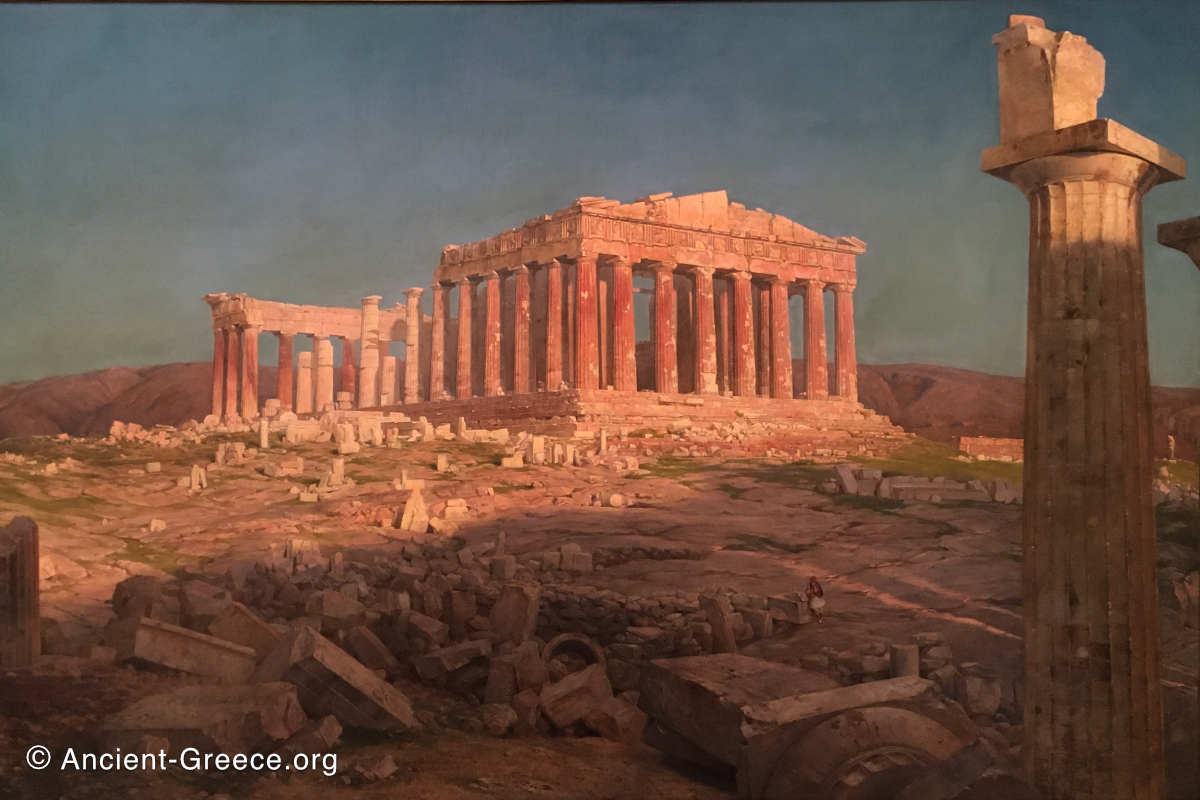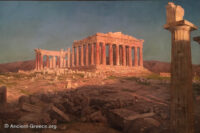
On this page:
The Acropolis After the Liberation of Greece
In 1821, after three and a half centuries of occupation, the Greeks revolted to overthrow the Ottoman Empire from their land. During the struggle, the Acropolis changed hands several times and the monuments were further damaged as Greeks and Turks alternated positions on the rock until the final liberation of Greece in 1827.
The newly formed Greek government immediately protected the Acropolis from further plundering of its cultural treasures, while all Turkish fortifications on the Propylaia were dismantled. Restoration of the monuments began and the temple of Athena Nike was reconstructed.
Excavations for the construction of the Acropolis Museum at the East end of the rock after 1880 unearthed many Archaic sculptures. The foundations of the old temple which was destroyed by the Persian invasion in 480 BCE were also discovered at this time.
Modern Acropolis

Since the late 19th century, the Acropolis of Athens has undergone systematic excavations and extensive restorations of its buildings.
Errors during the early days of archaeological restorations resulted in monuments being distorted and damaged. Early restorers used steel as a reinforcing element embedded in the marble parts of the buildings. As the metal oxidized over the years, it caused significant damage to the stone around it. Subsequent reconstructions replaced the early steel inserts with titanium ones.
Today the modern city of Athens threatens to destroy in a short time what took eons to erode. Air pollution from millions of vehicles and industrial complexes has corroded the marble, pulverizing its surface and causing irreparable damage to the monuments. The sulfuric acid of the polluted air, mixed with the rainwater reacts with the marble, transforming its surface into a layer of gypsum.
While experts and the Greek government search for the best way to preserve and reconstruct the monuments, many priceless artifacts (like the Caryatids from the Erechtheion and the Parthenon sculptures) have been removed from the buildings to be sheltered in the Acropolis museum, while exact replicas hold their place on the Acropolis rock.
This History of the Acropolis is divided into the following chapters:
- Introduction
- Prehistoric Acropolis
- Archaic Acropolis
- Classical Acropolis
- Post-Classical Acropolis
- Modern Acropolis
Related Pages

